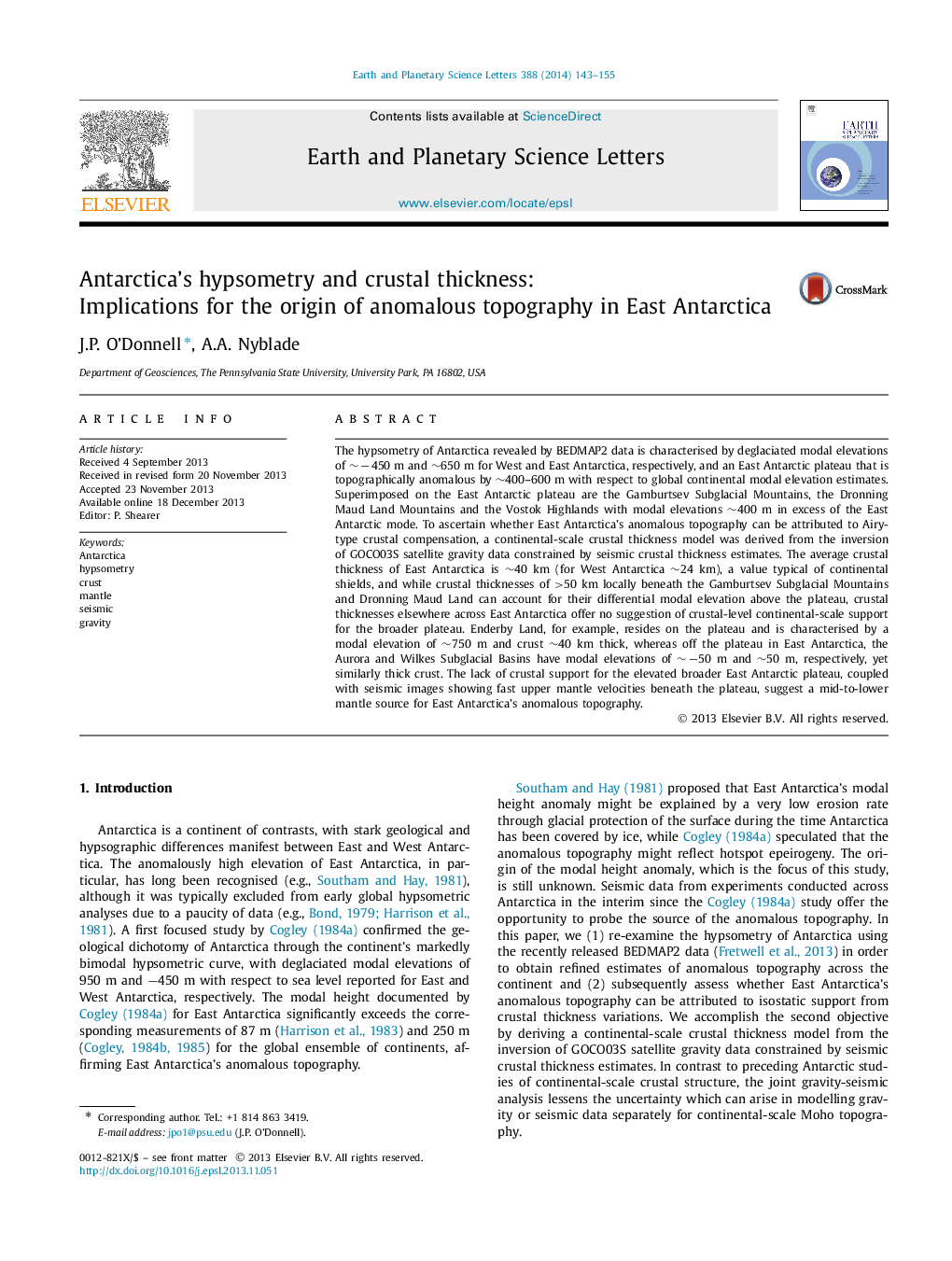| Article ID | Journal | Published Year | Pages | File Type |
|---|---|---|---|---|
| 6429763 | Earth and Planetary Science Letters | 2014 | 13 Pages |
â¢We present an updated hypsometric analysis of Antarctica based on BEDMAP2 data.â¢The East Antarctic Plateau is topographically anomalously high by â¼400-600 m.â¢We derive a Moho model for Antarctica consistent with both seismic and gravity data.â¢Local crustal thickness variations can account for the elevation of the Gamburtsevs.â¢Lack of crustal/upper mantle support for the plateau suggests a lower mantle source.
The hypsometry of Antarctica revealed by BEDMAP2 data is characterised by deglaciated modal elevations of â¼â450m and â¼650 m for West and East Antarctica, respectively, and an East Antarctic plateau that is topographically anomalous by â¼400-600 m with respect to global continental modal elevation estimates. Superimposed on the East Antarctic plateau are the Gamburtsev Subglacial Mountains, the Dronning Maud Land Mountains and the Vostok Highlands with modal elevations â¼400 m in excess of the East Antarctic mode. To ascertain whether East Antarcticaʼs anomalous topography can be attributed to Airy-type crustal compensation, a continental-scale crustal thickness model was derived from the inversion of GOCO03S satellite gravity data constrained by seismic crustal thickness estimates. The average crustal thickness of East Antarctica is â¼40 km (for West Antarctica â¼24 km), a value typical of continental shields, and while crustal thicknesses of >50 km locally beneath the Gamburtsev Subglacial Mountains and Dronning Maud Land can account for their differential modal elevation above the plateau, crustal thicknesses elsewhere across East Antarctica offer no suggestion of crustal-level continental-scale support for the broader plateau. Enderby Land, for example, resides on the plateau and is characterised by a modal elevation of â¼750 m and crust â¼40 km thick, whereas off the plateau in East Antarctica, the Aurora and Wilkes Subglacial Basins have modal elevations of â¼â50m and â¼50 m, respectively, yet similarly thick crust. The lack of crustal support for the elevated broader East Antarctic plateau, coupled with seismic images showing fast upper mantle velocities beneath the plateau, suggest a mid-to-lower mantle source for East Antarcticaʼs anomalous topography.
